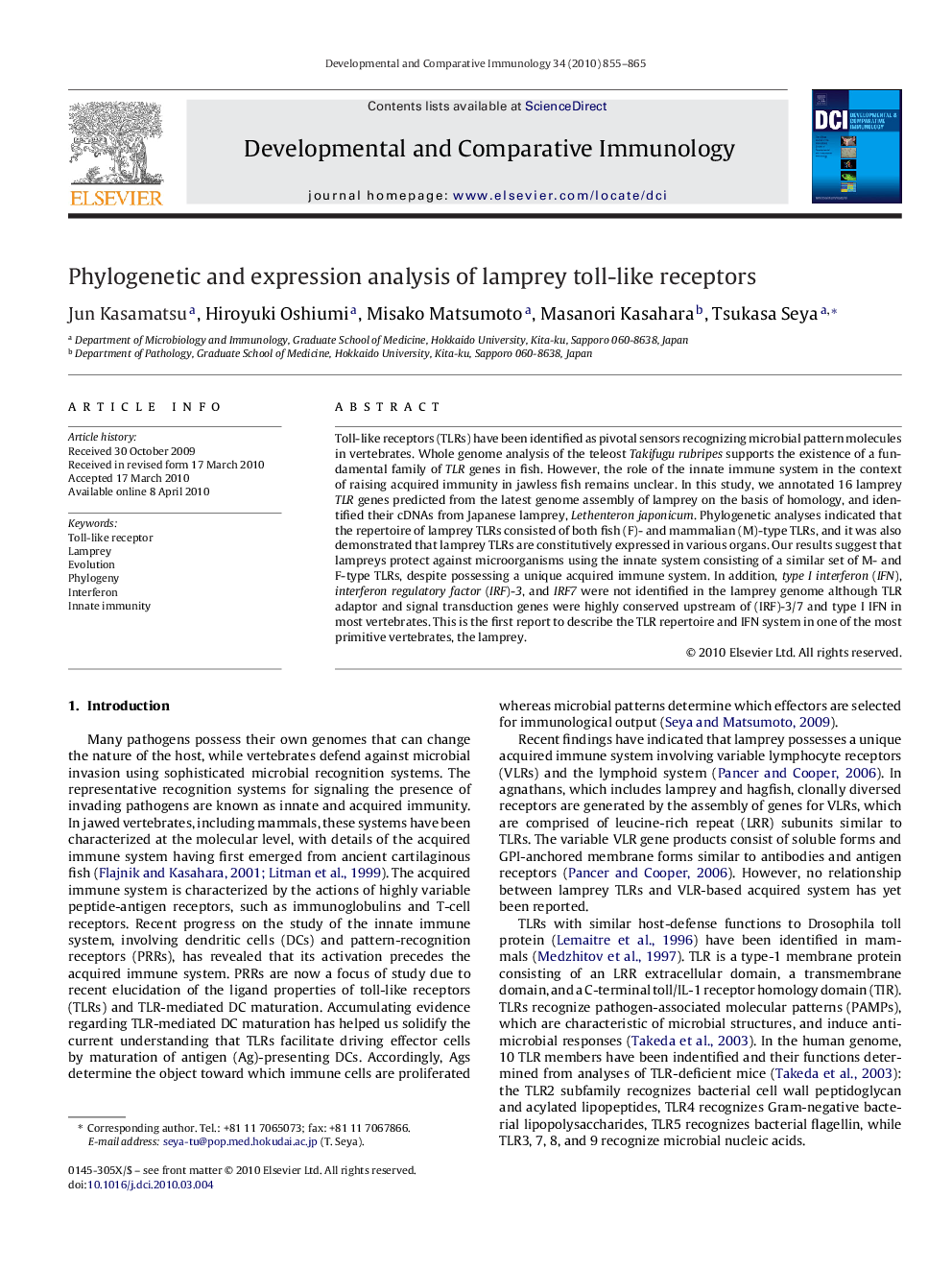| Article ID | Journal | Published Year | Pages | File Type |
|---|---|---|---|---|
| 2430091 | Developmental & Comparative Immunology | 2010 | 11 Pages |
Toll-like receptors (TLRs) have been identified as pivotal sensors recognizing microbial pattern molecules in vertebrates. Whole genome analysis of the teleost Takifugu rubripes supports the existence of a fundamental family of TLR genes in fish. However, the role of the innate immune system in the context of raising acquired immunity in jawless fish remains unclear. In this study, we annotated 16 lamprey TLR genes predicted from the latest genome assembly of lamprey on the basis of homology, and identified their cDNAs from Japanese lamprey, Lethenteron japonicum. Phylogenetic analyses indicated that the repertoire of lamprey TLRs consisted of both fish (F)- and mammalian (M)-type TLRs, and it was also demonstrated that lamprey TLRs are constitutively expressed in various organs. Our results suggest that lampreys protect against microorganisms using the innate system consisting of a similar set of M- and F-type TLRs, despite possessing a unique acquired immune system. In addition, type I interferon (IFN), interferonregulatory factor (IRF)-3, and IRF7 were not identified in the lamprey genome although TLR adaptor and signal transduction genes were highly conserved upstream of (IRF)-3/7 and type I IFN in most vertebrates. This is the first report to describe the TLR repertoire and IFN system in one of the most primitive vertebrates, the lamprey.
